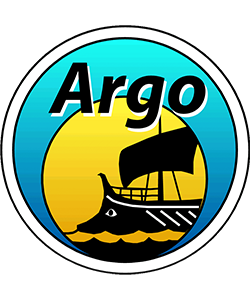Purpose
The Argo Steering Team (AST) provides scientific leadership and oversees the development and implementation of the global array of profiling floats (known as the Argo Program) operated by national and regional Argo projects.
Terms of Reference
- The AST shall oversee the development and operation of a global-scale Argo array of profiling floats with the primary objective of obtaining profiles of temperature and salinity and determining subsurface velocity.
- The AST shall define the scope of the Argo Program in respect of the design and geographical extent of the array and the objectives of the data delivery system. Consistent with Argo’s design and with international conventions, the AST shall coordinate and encourage the deployment of Argo floats in all the deep-water regions of the globe.
- In conjunction with the Argo Data Management Team (ADMT), the AST shall take responsibility for, and provide advice on, the contents, quality and timeliness of the Argo data stream to ensure scientific and operational requirements are met.
- The AST shall provide general guidance to the Argo Program Director, who, when that position is occupied, supervises the activities of the Argo Technical Coordinator. The AST, in consultation with the Executive Secretary of the IOC, shall establish the Terms of Reference for the Argo Technical Coordinator.
- The AST will encourage observing system studies to guide the long-term development of Argo sampling design.
- The AST will provide advice and guidance relating to technical innovations relevant to the float array.
- The AST will liaise with related global observing systems, including those concerned with satellite altimetry and with global scale ship-based hydrography, in particular GOOS and GCOS, through their oversight and coordination bodies, OOPC, GSSC, GCOS SC, JCOMM/OCG (including JCOMMOPS).
- The AST will provide scientific guidance to, and receive advice from, the relevant CLIVAR panels and working groups.
- The AST will assist national and regional programs to ensure sustained funding for the operation of the Argo array and related activities.
Membership
List of current Argo Steering Team and Executive Team members.
The AST shall be made up of:
- scientists and technical experts from national projects contributing to the international Argo Program. Normally this will be the scientific leader of a national project but more members will be allowed in the case of large national contributors.
- the (co-) chairs of the Argo Data Management Team
- the (co-) chairs of Argo BGC, Deep and Polar Missions
- the Argo Program Director (ex officio)
- the Argo Technical Coordinator (ex officio)
- representatives of Argo’s co-sponsoring bodies (CLIVAR and GODAE) (ex officio)
Meetings of the AST may also include:
- experts and representatives of organizations with whom Argo interacts shall be invited to attend as appropriate
- other national representatives whose scientific expertise is of value to a specific meeting
The AST shall be (co-) chaired by AST member(s) selected by the AST.
The AST shall form an Executive Group consisting of
- The AST (co-) chairs
- The Argo Director
- The ADMT (co-) chairs
- The BGC, Deep and Polar (co-) chairs
- The Argo Technical Coordinator
- Up to two AST members from the following regions:
- North America
- Europe
- North Asia (China, Japan, Korea)
- Southern Hemisphere (Australia, India, New Zealand, South Africa)
There shall be no fixed term of membership of the AST.
It is the responsibility of AST members
- to be the primary point of contact between the AST Chairs and their national project and to ensure appropriate attendance at AST meetings
- to report to the AST the views, problems and successes of their national project
- to ensure that the decisions of the AST are reported in their country and that appropriate actions are taken
- to take all necessary steps to ensure that their nation’s project contributes appropriately to the Argo array, to the data system and to Argo infrastructure
- to encourage scientific and operational uses of the Argo data stream and publicize Argo achievements
